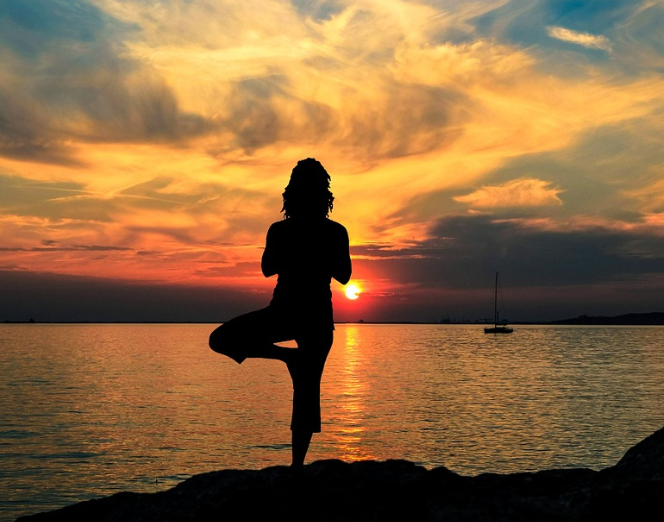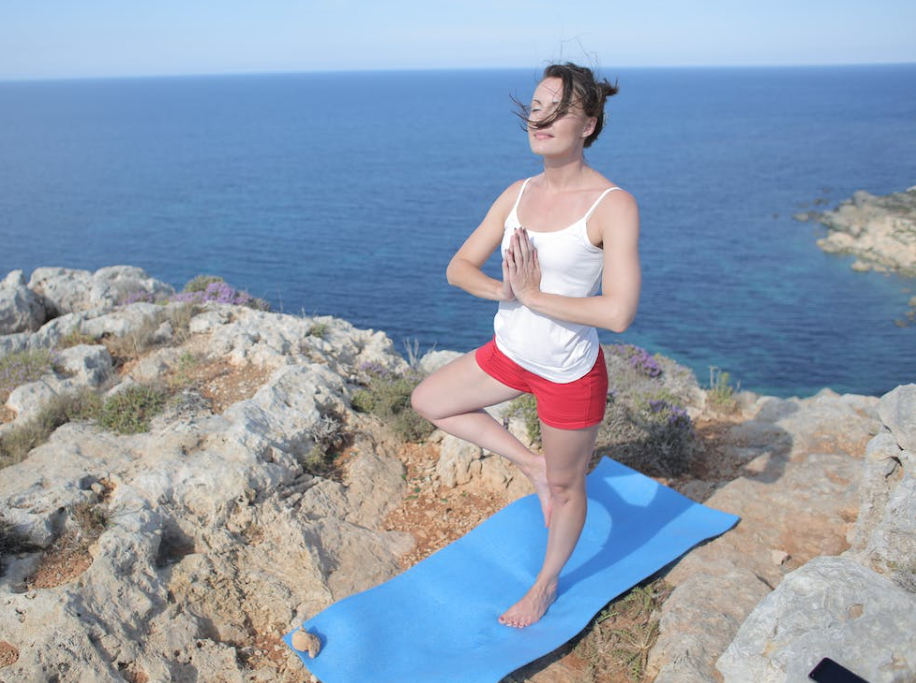Meditation Can Be Done While Standing?
Learn more about meditation by standing and reciting a mantra, visualizing a deity, or focusing on your chakras.

Selfpause Affirmation App
Download the app to get 1,000’s of affirmation meditations and everything you need to write, record and listen to your own.
You can do meditation while standing by reciting a mantra, visualizing a deity, or focusing on your chakras. You can even close your eyes if you’re practicing mindfulness meditation. Standing meditation is an excellent way to get your heart rate down and relax your mind. It can also be a great way to start your day or wind down after a long day.
Standing meditation

Standing meditation can help older adults improve their balance and mindfulness. It has been shown to be beneficial for reducing spine tension and reducing pain. It also builds a stronger lower body. Researchers conducted the first study of its kind. This research is significant as it adds to the body of knowledge in this area. The benefits of standing meditation are many.
First, you need to have a firm base and open hips. Then, put your hands over the lower abdomen. Next, drop your shoulders toward your sides, following your elbows. Then, press the crown of your head upwards. After you have achieved a comfortable standing position, you can begin practicing mindfulness.
Standing meditation also helps develop your kinesthetic awareness of your body. This allows you to perceive space and other people in a more clear way. It also strengthens your sense of sight, hearing, and smell. As a result, you will feel the world and your emotions more real. Each person will experience meditation in a unique way and gain different insights and benefits.
The benefits of standing meditation go far beyond the benefits of sitting meditation. It is better for the flow of spiritual energy and for the alignment of your chakras. In addition, standing posture allows you to focus better and you are less likely to become drowsy. Standing meditation can be particularly useful for people with physical challenges or physical injuries.
Standing meditation is similar to breathing meditation in that it is an excellent way to improve your overall health and well-being. It can release stress and strengthen your core muscles. It also improves your posture and improves your endurance and strength. In addition to helping you reduce stress and depression, it also helps you develop a deeper awareness of your body.
Standing meditation is also beneficial for bone density. It can heal chronic illnesses and increase internal strength. Standing meditation also helps improve your balance and alignment, improving your balance and overall body power. It was developed in China by masters of meditation.
Benefits

Meditation is done while standing has many benefits, and has been around for thousands of years. According to a study by Professor Yu Yong-Nian of Teh Lu Hospital in Beijing, standing meditation increases the flow of oxygen to the organs and relaxes the entire body. The practice also teaches the body to use its muscles to maintain proper posture, which is a key component of meditation.
Though some people find standing meditation difficult, if done regularly it can be beneficial. For one, it helps develop a deeper awareness of the body. It improves circulation and aligns the chakras. It also helps strengthen core muscles. Beginners should only practice standing meditation for a short period, as the position can be uncomfortable and cause restlessness in the mind. But as you become more familiar with the position, your muscles and motor systems will adjust to it.
Standing meditation improves self-awareness, a state of deep connection to one’s own “essence and purpose.” It helps people become more connected to their own bodies, as they become more aware of the body’s sensations. Standing meditation also reduces tension in the spine and relieves back pain. It also helps people who have joint pain slow the progression of swelling and build a stronger lower body.
It’s also a good way to relax after a workout. Standing meditation is beneficial for the body and the mind because it allows you to relax and avoid the mental chatter that may distract you from your workout. Mindfulness meditation has also been proven to reduce anxiety and depression. The practice also allows people to distinguish between nagging worries and problem-solving thoughts.
When practicing upright meditation, you don’t need any equipment for it. In fact, you can practice it anytime, anywhere. Just make sure you keep your knees slightly bent. And remember to cool down properly after standing. Aim to practice this daily to get the maximum benefits from it. If you can, do it for at least 20 minutes each day.
The benefits of standing meditation are just as great as sitting meditation. It improves balance, bone density, and awareness, as well as the way you move your body. If you’re unable to sit or lie down for long periods of time, standing meditation is an ideal alternative for you.
Preparation

Standing meditation has tremendous spiritual benefits, including the capacity to charge your energy body. You can also practice mindfulness by focusing on your chakras. In addition, standing meditation helps you develop a sense of body awareness, cultivating a deep relaxation state. You can begin by standing or sitting for a few minutes, and gradually build up to a full 40 minutes a day. Depending on your needs and abilities, you may find standing meditation easier or more challenging than sitting meditation.
Standing meditation involves five specific postures that help release long-held stress and tension from the body. This type of meditation also uses relaxed abdominal breathing, mental imagery, and awareness of the inside of the body. It has been compared to acupuncture, but may be even more powerful. To prepare for this practice, follow these tips:
Standing meditation is not only an effective way to calm the mind and relax the body, but it can also help heal illnesses and build internal strength and fitness. This type of meditation can be done anywhere and is especially beneficial for creative professionals who need to recharge their energy and remain focused. It can also help knowledge workers calm their minds and reduce their stress levels while strengthening their muscles and promoting a healthy flow of Qi.
After a few sessions, you will naturally feel comfortable with this posture. If you have difficulty standing in this posture, try practicing in front of a mirror. In this way, you will become accustomed to the proper posture and will be able to practice it without conscious thought. This posture promotes a clear mind and calm body, and can be used anytime you find yourself standing.
Standing meditation benefits the same benefits as lying down meditation, and may even improve your bone density. Additionally, it helps you develop better balance, better alignment, and more awareness of your movements. Standing meditation can be difficult for some, but it can be very helpful for those who find sitting too uncomfortable or difficult.
Cool down

Standing meditation is a powerful form of meditation, as it increases energy flow in the body and enhances awareness of the energy that flows through your body. This form of meditation also helps you to strengthen your core muscles and improve your posture. People with poor postures often find that standing meditation helps to correct these habits.
For most people, twenty minutes a day of standing meditation is enough. But to get the best results, you should practice for at least forty minutes per day. If you have trouble achieving this goal, try starting with a shorter period of practice, such as one or two minutes. To avoid straining your body, warm up your body before you begin standing. This will allow your joints to loosen and your energy flow more easily.
In standing meditation, you will develop a greater sense of orientation in space, and among people. You will also develop a more acute sense of touch, hearing, and smell. You will experience physical sensations more deeply and your emotions will feel more intensely. Depending on the practice, each person will develop his or her own unique insights.
When practicing standing meditation, you will find that it improves your posture and balance. It also helps improve bone density. It will also improve your awareness, alignment, and power. Because you will not be lying down or sitting down, you will not feel the need to use other meditation tools like cushions or pillows.
Standing meditation also allows you to practice mindfulness, which has been shown to reduce depression and stress. It also allows you to better discern between problem-solving thoughts and nagging worries. In addition, standing meditation also helps you avoid distractions, which can distract you from your meditation. If you are suffering from anxiety, it is even more important to practice mindful meditation.
When practicing meditation while standing, you will need to keep your arms and legs relaxed, and your feet slightly bent. Try to keep your eyes closed, especially if you are a beginner. It is important to focus on the breath and not the movement of your arms and legs.
Our Top FAQ's
Yes, it is possible to practice meditation while standing. In fact, many meditation traditions incorporate standing meditation as part of their practice. This can be a more active form of meditation that involves focusing on the sensations of the body and the movement of the breath while standing still.
Meditating while standing can have several benefits. For example, it can help to improve balance, concentration, and posture, as well as increase physical awareness and mental clarity. It can also be a useful tool for managing stress and anxiety, as the act of standing still and focusing on the breath can help to calm the mind and bring a sense of inner peace.
Meditating while standing is different from sitting or lying down in that it requires more physical awareness and concentration. When standing, it is important to pay attention to the alignment of the body, the balance of the weight, and the sensations of the feet on the ground. This can help to improve posture and balance, as well as increase physical awareness and mental focus.
There are several techniques and poses that can be used for standing meditation. For example, some common poses include the mountain pose, where the feet are planted firmly on the ground and the arms are held at the sides; the tree pose, where one foot is placed on the opposite thigh and the arms are raised above the head; and the warrior pose, where one leg is extended forward and the other is bent, with the arms extended to the sides. Each of these poses can be held for several breaths, with the focus on the sensations of the body and the movement of the breath.
Meditation while standing can be incorporated into a daily routine. It can be done anywhere and at any time, as long as there is a safe and stable surface to stand on. It may be helpful to set aside a dedicated time and space for standing meditation, such as first thing in the morning or during a break in the day, but it is not required. The important thing is to find a quiet, comfortable place where you can stand still and focus on your breath.
